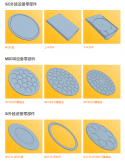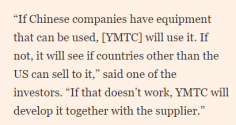Samsung SDI Files Lawsuit against China’s BOE in US for Trade Secret Infringement
Samsung Display filed a complaint with the U.S. International Trade Commission (ITC) against China’s BOE, the world’s largest liquid crystal display (LCD) panel maker and Samsung Display’s largest display competitor. Samsung Display claims BOE stole its technology. This is separate from an ongoing patent infringement lawsuit.
According to the display industry on Nov. 2, Samsung Display filed a complaint against BOE and eight other companies including BOE’s subsidiaries with the U.S. ITC on Oct. 31 (local time) for trade secret infringement.
Trade secret infringement is not the unauthorized utilization of disclosed technology like patent infringement, but a theft of technology through partners and current and former employees.
In its complaint, Samsung Display alleged that BOE has infringed upon trade secrets related to Samsung Display’s organic light-emitting diode (OLED) panel and module technology through Samsung Display’s partner company Toptec since late 2017.
In March, the Suwon High Court convicted 11 Toptec employees of leaking Samsung Display’s trade secrets. During the trial, Chinese companies such as BOE were mentioned as potential customers of Toptech.
Samsung Display filed a complaint with the U.S. ITC against China’s BOE for leaking trade secrets because it found evidence that Chinese companies such as BOE were involved in the process of leaking trade secrets from its partner company, Toptech, analysts say.
According to sources in the display industry on Nov. 2, a number of Chinese companies were mentioned in a lawsuit against Toptech employees for allegedly leaking Samsung Display’s technology to China.
The equipment at issue in the case is an organic light-emitting diode (OLED) curved surface laminator, which plays a key role in realizing curved surfaces of smartphone flexible OLED panels. Although the equipment was made by Toptec, the production plan, core design, and structure were proposed by Samsung Display or jointly developed by the two companies together. The technology has been applied to the Galaxy S20 and Note series.
In 2018, the Suwon District Public Prosecutors’ Office indicted 11 Toptec executives for leaking technology overseas while exporting curved laminators to China. Toptec was already supplying the curved laminators to Samsung Display.
In March, the Suwon High Court convicted the executives in the second trial after they were acquitted in the first trial. In July, the Supreme Court confirmed an original verdict that sentenced a former Toptec CEO to three years in prison. During the trial, Chinese display panel companies including BOE, CSOT, Visionox, and Everdisplay were mentioned as potential customers of Toptec’s OLED curved surface laminators.
Samsung Display filed a complaint against BOE with the U.S. ITC for leaking trade secrets because the trial in Korea resulted in a guilty verdict and revealed involvements of Chinese companies such as BOE in the process, legal experts say. The Korean display giant claims that this is malicious technology theft by BOE. In Korea, there are growing concerns about such trade secret infringements by Chinese companies.
In filing the lawsuit, Samsung Display reportedly claimed that BOE is also infringing upon its trade secrets by hiring Korean engineers.
Samsung Display also has a separate patent infringement lawsuit against BOE. The company filed a complaint with the ITC against parts wholesalers, alleging that after-sales service (A/S) panels for smartphones distributed in the United States infringed upon Samsung Display’s diamond pixel patent. The patent infringement case began in earnest in February when BOE voluntarily agreed on investigations.
In June, BOE filed an inter partes review (IPR) suit with the U.S. Patent and Trademark Office against five of Samsung Display’s patents, and Samsung Display responded by filing patent infringement lawsuits in the U.S. Eastern District of Texas and a Chinese court.


